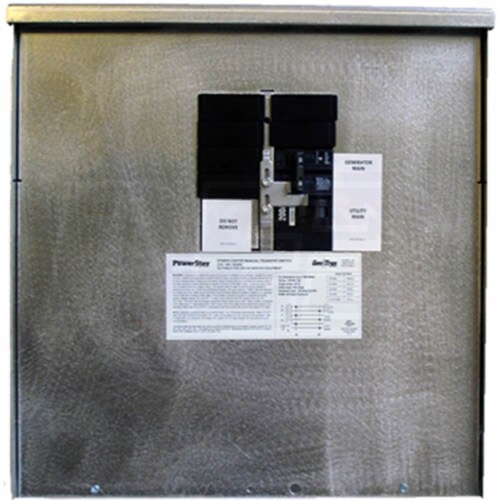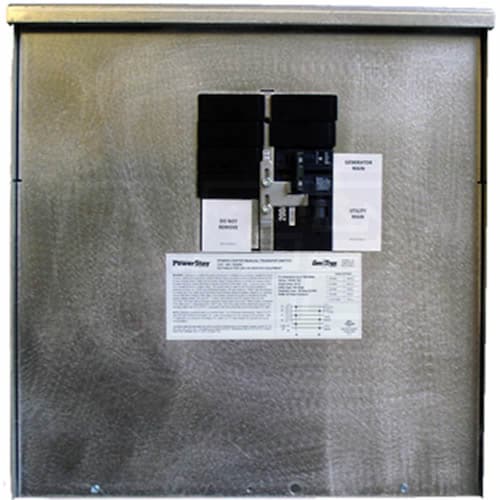Hi, have searched but haven't found an answer about my same setup.
I have a 7KwH system w/ Suniva panels and microinverters. As far as I can tell, all this is true:
-Power all feeds into a grid cutoff outside the house which opens the circuit in a power outage
-From the shutoff, the power feeds into the basement
-There it goes through a breaker for each of the 2 arrays, and then "backfeeds" a 220V breaker in the panel
So, next I would like to be able to use a small portable backup gen (Honda EU2000i) to power either furnace or refrigerator, and a few lights. My situation will be 100V only. I have 2 possible ways of doing this:
1) A generator interlock switch such as https://www.ebay.com/i/172244594942?chn=ps. Here power is backfed to a breaker from a gen cord to a socket on the exterior of the house. That gen breaker can mechanically only be on if the main breaker is off. In this case, during an outage, I'd turn off all the circuit breakers in the panel, flip the main, flip the interlock, fire up the gen, and then flip on only the 1-2 breakers I want to use. Because I'm only feeding 110V, I'd need all my "emergency" breakers on the same leg of the panel, eg every other breaker on the right side. Easy enough to set up.
2) A small gen transfer panel like http://a.co/ebmf4JY, where the panel puts a switch for line-off-gen inline into each circuit you'd want to use in an outage. More to wire, but also no big deal.
I would like to do #2 to isolate the gen to the separate panel, because it seems more accepted, and to avoid having to flip all the breakers off/on. I just want to make sure that either of these options is okay w/ 220V of solar coming into the main panel.
And, in both cases, what happens if the power comes back and I have the gen running?
Thank you!
I have a 7KwH system w/ Suniva panels and microinverters. As far as I can tell, all this is true:
-Power all feeds into a grid cutoff outside the house which opens the circuit in a power outage
-From the shutoff, the power feeds into the basement
-There it goes through a breaker for each of the 2 arrays, and then "backfeeds" a 220V breaker in the panel
So, next I would like to be able to use a small portable backup gen (Honda EU2000i) to power either furnace or refrigerator, and a few lights. My situation will be 100V only. I have 2 possible ways of doing this:
1) A generator interlock switch such as https://www.ebay.com/i/172244594942?chn=ps. Here power is backfed to a breaker from a gen cord to a socket on the exterior of the house. That gen breaker can mechanically only be on if the main breaker is off. In this case, during an outage, I'd turn off all the circuit breakers in the panel, flip the main, flip the interlock, fire up the gen, and then flip on only the 1-2 breakers I want to use. Because I'm only feeding 110V, I'd need all my "emergency" breakers on the same leg of the panel, eg every other breaker on the right side. Easy enough to set up.
2) A small gen transfer panel like http://a.co/ebmf4JY, where the panel puts a switch for line-off-gen inline into each circuit you'd want to use in an outage. More to wire, but also no big deal.
I would like to do #2 to isolate the gen to the separate panel, because it seems more accepted, and to avoid having to flip all the breakers off/on. I just want to make sure that either of these options is okay w/ 220V of solar coming into the main panel.
And, in both cases, what happens if the power comes back and I have the gen running?
Thank you!




Comment